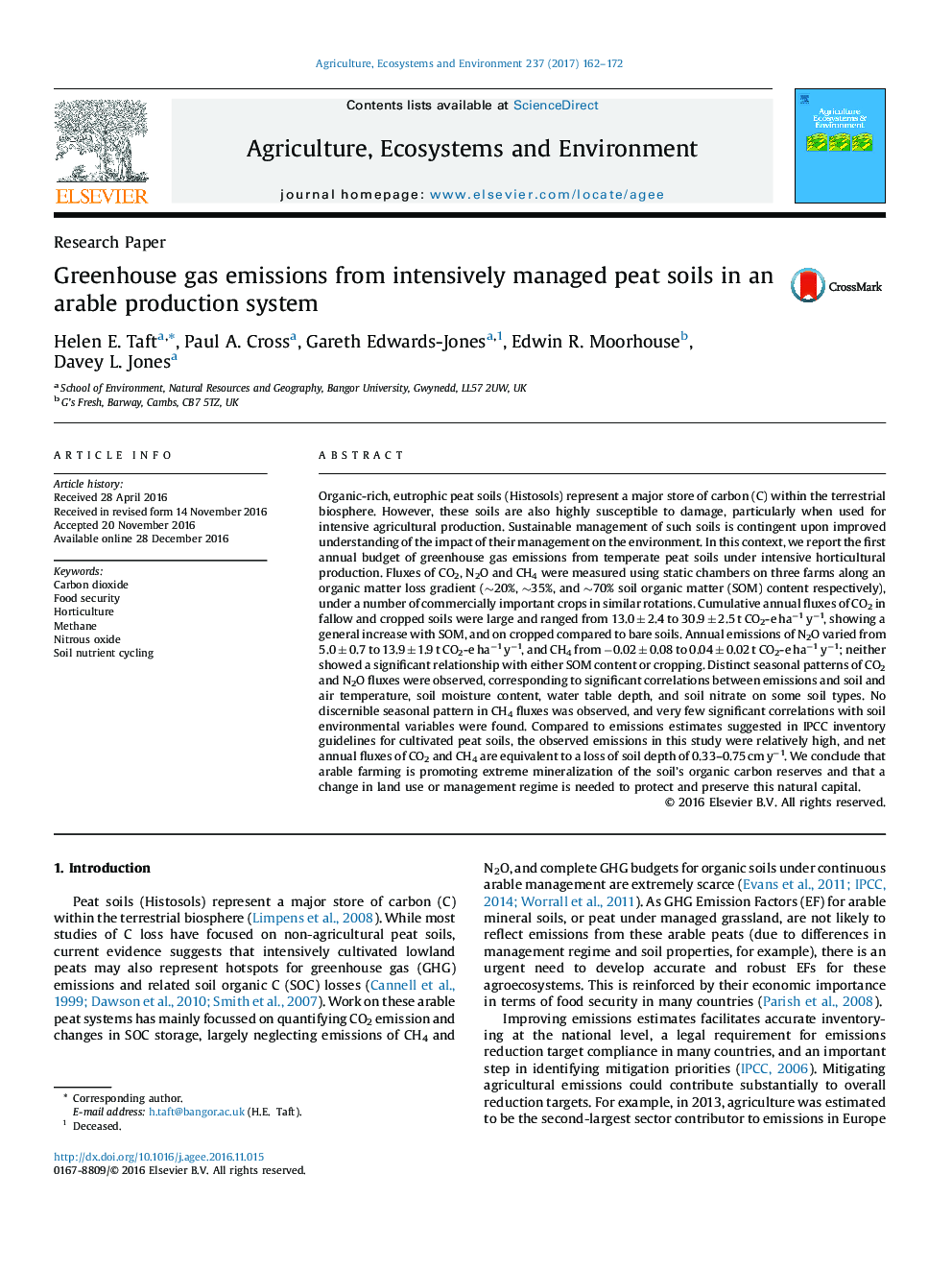| کد مقاله | کد نشریه | سال انتشار | مقاله انگلیسی | نسخه تمام متن |
|---|---|---|---|---|
| 5538229 | 1552015 | 2017 | 11 صفحه PDF | دانلود رایگان |
- We monitored annual CO2, N2O and CH4 emissions from arable peat soils.
- Emissions were dominated by CO2 from SOM mineralization.
- Cumulative N2O emissions were important, and CH4 emissions negligible.
- Total emissions generally increased with an increase in SOM content.
- Intensive cultivation promotes loss of SOM and depletes the soil resource.
Organic-rich, eutrophic peat soils (Histosols) represent a major store of carbon (C) within the terrestrial biosphere. However, these soils are also highly susceptible to damage, particularly when used for intensive agricultural production. Sustainable management of such soils is contingent upon improved understanding of the impact of their management on the environment. In this context, we report the first annual budget of greenhouse gas emissions from temperate peat soils under intensive horticultural production. Fluxes of CO2, N2O and CH4 were measured using static chambers on three farms along an organic matter loss gradient (â¼20%, â¼35%, and â¼70% soil organic matter (SOM) content respectively), under a number of commercially important crops in similar rotations. Cumulative annual fluxes of CO2 in fallow and cropped soils were large and ranged from 13.0 ± 2.4 to 30.9 ± 2.5 t CO2-e haâ1 yâ1, showing a general increase with SOM, and on cropped compared to bare soils. Annual emissions of N2O varied from 5.0 ± 0.7 to 13.9 ± 1.9 t CO2-e haâ1 yâ1, and CH4 from â0.02 ± 0.08 to 0.04 ± 0.02 t CO2-e haâ1 yâ1; neither showed a significant relationship with either SOM content or cropping. Distinct seasonal patterns of CO2 and N2O fluxes were observed, corresponding to significant correlations between emissions and soil and air temperature, soil moisture content, water table depth, and soil nitrate on some soil types. No discernible seasonal pattern in CH4 fluxes was observed, and very few significant correlations with soil environmental variables were found. Compared to emissions estimates suggested in IPCC inventory guidelines for cultivated peat soils, the observed emissions in this study were relatively high, and net annual fluxes of CO2 and CH4 are equivalent to a loss of soil depth of 0.33-0.75 cm yâ1. We conclude that arable farming is promoting extreme mineralization of the soil's organic carbon reserves and that a change in land use or management regime is needed to protect and preserve this natural capital.
Journal: Agriculture, Ecosystems & Environment - Volume 237, 16 January 2017, Pages 162-172
